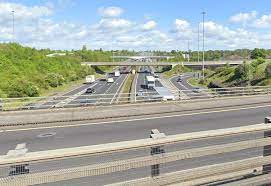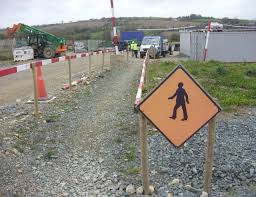Road Infrastructure Safety Management
TII periodically carries out a collision analysis of the entire national road network, as required by GE-STY-01022 Network Safety Analysis, as well as pro active safety inspections (AM-STY-06044 Road Safety Inspection). The purpose of this combined process is to identify both locations that have high concentrations of collisions and/or potential collisions.



Network-wide Road Safety Assessment
In compliance with the RISM Directive (Article 5) and the Irish Government’s Road Safety Strategy (Phase 1 Action Plan 2021 to 2024 – Action 1), TII Road Safety have prepared a network-wide road safety assessment (NWA) for Irish national primary roads outside of urban areas. The purpose of NWA is to classify the road network into safety levels. Those sections with poor safety ratings will be prioritised for targeted road safety inspections and, where necessary, suitable interventions.
The TII NWA methodology complements existing safety management procedures and builds on TII’s established practices for network safety analysis and road safety inspections. It introduces a structured, data-driven classification that integrates both historical collisions and infrastructure-based risk indicators.
The NWA is organised around four components that together enable a systematic classification of safety levels across the rural sections of the national road network:- Linear Reference System (LRS) - Provides a spatial structure to the NWA, ensuring that reactive and proactive data are mapped to specific locations on the network.
- Reactive Methodology - Evaluates safety performance based on historical collision data. The reactive approach reflects the actual outcomes and highlights sections with recorded safety concerns.
- Proactive Methodology – Complements the reactive analysis by assessing potential safety issues based on infrastructure conditions. It utilises Road Safety Inspections (RSIs) and captures latent safety issues that might not yet be reflected in collision statistics.
- Integrated Methodology – Combining both the reactive and proactive components into a unified safety score for each segment of the network. The scores are used to classify the network into five safety levels, ranging from Level 1 (highest safety level) to Level 5 (lowest safety level).
You can find the EU Network-Wide Road Safety Assessment Safety Classification for National Primary Roads map here
Network Safety Analysis
Network Safety Analysis uses collision data and vehicle kilometres travelled to assess safety, and to identify high collision locations on the National Road Network. This collision analysis goes towards targeting annual road safety remedial measures.
The EU Directive on Road Infrastructure Safety Management (EU RISM) provides a formal procedure for Network Safety Analysis. Similar methods have been implemented in Ireland since the 1970s.
Collision data is recorded by An Garda Síochána, and is used by the Road Safety Authority and TII for research purposes.
High Collision Locations are identified by benchmarking sites against threshold levels established for each specific reference population. Each high collision location is reviewed and used to help identify if there are any collision patterns. This helps to then determine if an engineering countermeasure will improve the safety performance of the location
Temporary Safety Measures Inspection (TSMI)
TSMI is an inspection of road works sites on the National Road Network. The purpose is to ensure that temporary safety measures standards are being correctly implemented at road work sites and to record possible impacts of road works on the safety of traffic flow.
TSMI is a requirement of EU Road Infrastructure Safety Management (EU RISM) under Article 6, which also calls for the implementation of Road Safety Inspections. Inspections are carried out by TII, local authorities and Statutory Undertaker or Road Operators. We also conduct random inspections on local authority, Statutory Undertaker and Road Operator temporary safety measures to ensure that the requirements are being met.
Road Safety Inspections (RSI)
RSIs aim to improve the safety of the National Road Network. These inspections identify any safety related items that require further review and may potentially require a design solution. These inspections exclude routine maintenance items which are identified and remedied through other TII processes. RSI is carried out on all national roads, including tunnels. Each route is to be inspected at least once every five years. RSI teams will be provided with an inspection brief, and the collision rates for the National Road Network prior to undertaking the site visit.
Road Safety Impact Assessment (RSIA)
RSIA is a strategic assessment of the impact of different planning options for a new road, or for substantial modifications to an existing road, on the safety performance of the road network. RSIA is required for such projects on the National Road Network and is recommended for similar schemes on local and regional roads.
Road Safety Audit (RSA)
RSAs evaluate road schemes during design and construction to identify potential hazards. These audits are an EU requirement, carried out on all new national road infrastructure projects and any scheme that results in a permanent change to the road or roadside layout. Audits are also recommended for similar changes to the local and regional road network. During RSA, the audit team looks at the scheme from the point of view of all road users, with particular attention being paid to the needs of vulnerable road users. The RSA team identifies potential safety problems within the scheme and makes recommendations to the designer to minimise future collision occurrence and severity.